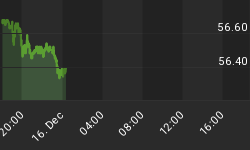The U.S. Dollar finished up for the day in a move which began on Friday. At that time investors began to pare positions ahead of this week's FOMC and G-20 meetings. Traders are lightening up their short Dollar positions in anticipation of an announcement by the Fed to end its stimulus programs. Some traders also believe that the Fed is working on an exit strategy. Investors will also be watching the G-20 meeting later this week. Among the topics to be discussed are government stimulus programs and the Dollar as a reserve currency. Investors expect to get clarity from other central banks as to the timing and the impact of ending government stimulus plans. In addition, there will most likely be discussion about reducing the U.S. Dollar's role as the global reserve currency.
The EUR USD is consolidating after showing several weeks of strength. The Euro still holds an interest rate advantage over the Dollar so don't expect it to get too bearish. Most of the movement is just housekeeping ahead of the Fed report on the 23rd.
Concerns over the U.K. financial system continue to weaken the GBP USD in a move that started late last week. The acceleration to the downside is being triggered by reports that Lloyds Banking Group Plc may need additional capital. This issue will compound the Bank of England's mandate to get the economy back on track.
Technically, the GBP USD may have reached a short-term oversold level which could trigger the start of a 1 - 2 day short-covering rally.
Last week's comments from Japan's Finance Minister weighed on the Japanese Yen today. In a statement last week, the finance minister said exchange rates should be set by economic conditions. This comment triggered profit-taking and fresh selling as traders try to push the Yen to a level which better reflects the economic condition of the economy. Some traders fear that the government will step in to weaken the Yen unless market forces take over.
Technically, the USD JPY confirmed last week's closing price reversal bottom which is usually an indication of the start of a 2 - 3 week rally.
Weaker oil and equities pressured the Canadian Dollar. Although demand for higher risk assets helped beat down the USD CAD recently, technically oversold conditions make it ripe for a short-covering rally.
Weakness in the equity markets also led to profit-taking in the AUD USD and NZD USD. Demand for higher yielding assets is down at this time ahead of the Fed meeting on the 23rd. Aussie traders are also waiting for further economic news that will indicate when the Reserve Bank of Australia is most likely to begin raising interest rates.
















